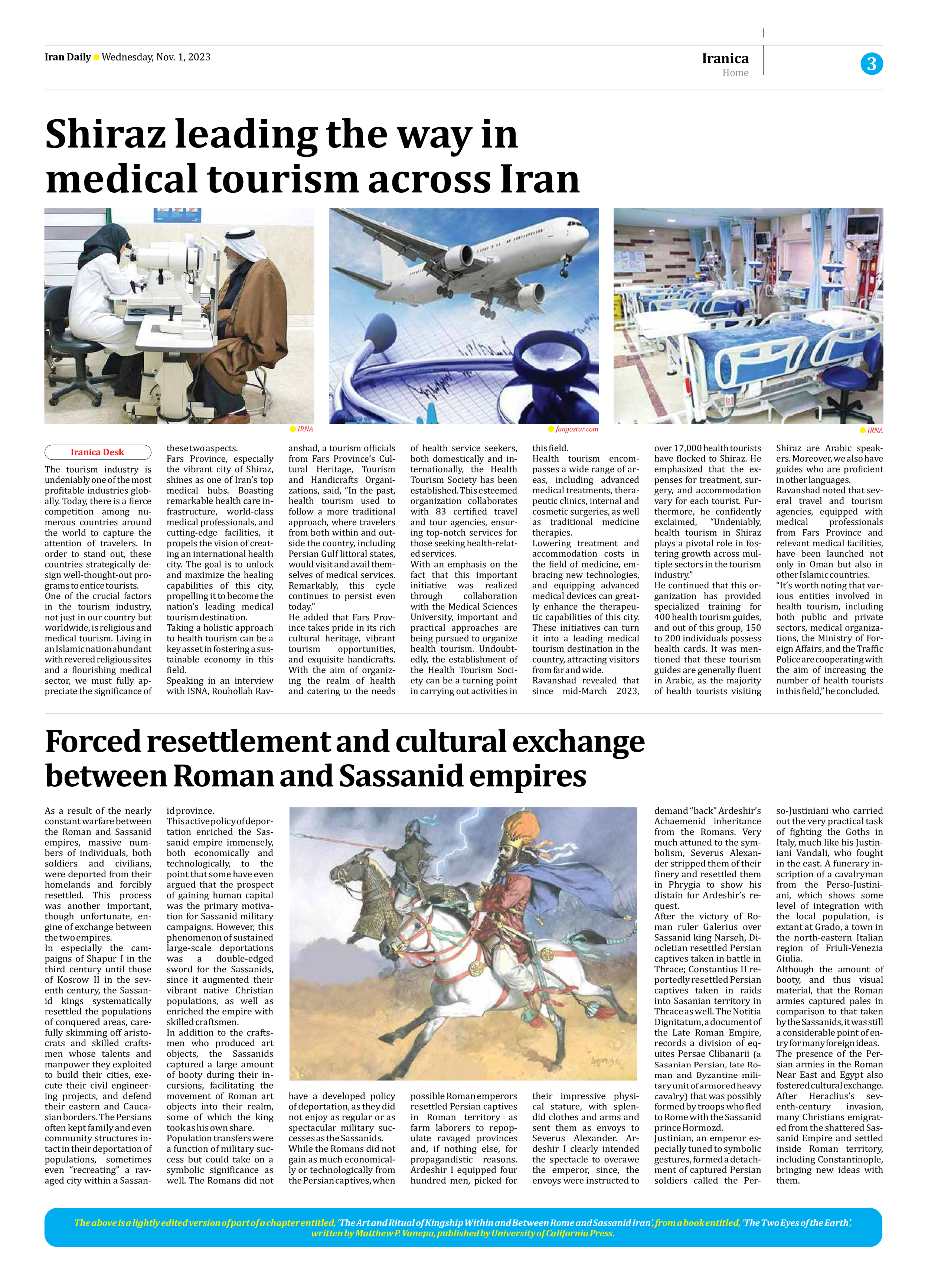
Forced resettlement and cultural exchange between Roman and Sassanid empires
As a result of the nearly constant warfare between the Roman and Sassanid empires, massive numbers of individuals, both soldiers and civilians, were deported from their homelands and forcibly resettled. This process was another important, though unfortunate, engine of exchange between the two empires.
In especially the campaigns of Shapur I in the third century until those of Kosrow II in the seventh century, the Sassanid kings systematically resettled the populations of conquered areas, carefully skimming off aristocrats and skilled craftsmen whose talents and manpower they exploited to build their cities, execute their civil engineering projects, and defend their eastern and Caucasian borders. The Persians often kept family and even community structures intact in their deportation of populations, sometimes even “recreating” a ravaged city within a Sassanid province.
This active policy of deportation enriched the Sassanid empire immensely, both economically and technologically, to the point that some have even argued that the prospect of gaining human capital was the primary motivation for Sassanid military campaigns. However, this phenomenon of sustained large-scale deportations was a double-edged sword for the Sassanids, since it augmented their vibrant native Christian populations, as well as enriched the empire with skilled craftsmen.
In addition to the craftsmen who produced art objects, the Sassanids captured a large amount of booty during their incursions, facilitating the movement of Roman art objects into their realm, some of which the king took as his own share.
Population transfers were a function of military success but could take on a symbolic significance as well. The Romans did not have a developed policy of deportation, as they did not enjoy as regular or as spectacular military successes as the Sassanids.
While the Romans did not gain as much economically or technologically from the Persian captives, when possible Roman emperors resettled Persian captives in Roman territory as farm laborers to repopulate ravaged provinces and, if nothing else, for propagandistic reasons. Ardeshir I equipped four hundred men, picked for their impressive physical stature, with splendid clothes and arms and sent them as envoys to Severus Alexander. Ardeshir I clearly intended the spectacle to overawe the emperor, since, the envoys were instructed to demand “back” Ardeshir’s Achaemenid inheritance from the Romans. Very much attuned to the symbolism, Severus Alexander stripped them of their finery and resettled them in Phrygia to show his distain for Ardeshir’s request.
After the victory of Roman ruler Galerius over Sassanid king Narseh, Diocletian resettled Persian captives taken in battle in Thrace; Constantius II reportedly resettled Persian captives taken in raids into Sasanian territory in Thrace as well. The Notitia Dignitatum, a document of the Late Roman Empire, records a division of equites Persae Clibanarii (a Sasanian Persian, late Roman and Byzantine military unit of armored heavy cavalry) that was possibly formed by troops who fled to Rome with the Sassanid prince Hormozd.
Justinian, an emperor especially tuned to symbolic gestures, formed a detachment of captured Persian soldiers called the Perso-Justiniani who carried out the very practical task of fighting the Goths in Italy, much like his Justiniani Vandali, who fought in the east. A funerary inscription of a cavalryman from the Perso-Justiniani, which shows some level of integration with the local population, is extant at Grado, a town in the north-eastern Italian region of Friuli-Venezia Giulia.
Although the amount of booty, and thus visual material, that the Roman armies captured pales in comparison to that taken by the Sassanids, it was still a considerable point of entry for many foreign ideas.
The presence of the Persian armies in the Roman Near East and Egypt also fostered cultural exchange.
After Heraclius’s seventh-century invasion, many Christians emigrated from the shattered Sassanid Empire and settled inside Roman territory, including Constantinople, bringing new ideas with them.
The above is a lightly edited version of part of a chapter entitled, ‘The Art and Ritual of Kingship Within and Between Rome and Sassanid Iran’, from a book entitled, ‘The Two Eyes of the Earth’,
written by Matthew P. Vanepa, published by University of California Press.







